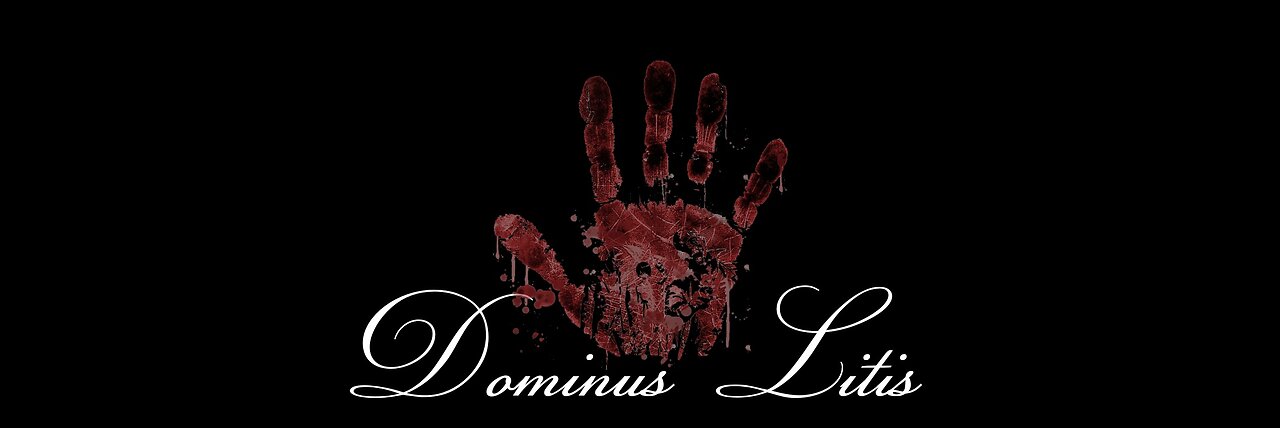Premium Only Content

Illusion of a Perfect Circle
Thesis: The Impossibility of a 12-Node Circle on Graph Paper and the Emergence of the Outward Spiral
Abstract:
This thesis explores the mathematical limitations of representing perfect geometric constructs, specifically the perfect circle, in discrete spaces. Using graph paper as a model, the paper examines the impossibility of constructing a 12-node circle, as each attempt results in an unavoidable approximation error of 0.01% per 1/4 revolution, which compounds over successive revolutions, leading to a growth of error at a rate of 0.04% per revolution. This discrepancy reveals that a true perfect circle does not exist in discrete systems, and the closest approximation is an outward spiral that increases in size at an accelerating rate. This thesis further discusses the connection between this phenomenon and the Fibonacci sequence, where the outward spiral’s growth mirrors the exponential nature of Fibonacci numbers. The mathematical, geometric, and philosophical implications of this discovery are explored, offering new insights into the limitations of discrete space representation and the nature of geometric ideals.
Chapter 1: The Perfect Circle in Continuous Mathematics
The perfect circle, a fundamental shape in Euclidean geometry, is defined as the set of all points in a plane that are equidistant from a fixed center. Mathematically, it is represented as:
x2+y2=r2x^2 + y^2 = r^2
where rr is the radius and (x,y)(x, y) are the coordinates of any point on the circle. This equation assumes a continuous space, meaning the coordinates can take any real value. In such a space, a perfect circle is an ideal geometric construct, with all points being equidistant from the center and the curve smooth with no gaps.
However, this idealized form of the circle does not exist in discrete spaces. When attempting to represent a circle on graph paper or in digital systems, the continuous nature of the circle must be approximated using discrete points. The limitations of graph paper, where only integer values can be used for coordinates, result in a loss of smoothness and an introduction of errors in the circle's representation.
Chapter 2: The 12-Node Circle on Graph Paper
Consider the attempt to draw a 12-node circle on graph paper. The idea is to place 12 points around a circle, evenly spaced, and connect them to form the circle. In theory, this would result in a perfect circle with 12 nodes, but graph paper constraints dictate that these nodes must correspond to integer coordinates.
Given that graph paper is a discrete grid, the true geometric shape of the circle can never be perfectly achieved. The placement of the 12 nodes results in slight distortions because the points must fall on integer grid intersections. These distortions increase as we try to create a smooth curve with a fixed number of points. The perfect symmetry of a circle is inherently incompatible with the grid structure of graph paper.
The primary observation is that as we attempt to place the nodes, we are forced to make slight adjustments that create a small but cumulative approximation error. This error manifests as a deviation from the idealized perfect circle. This chapter explores the mathematical nature of this error, which remains constant and accumulates as more revolutions are made.
Chapter 3: The 0.01% Error and Its Implications
A critical insight into the impossibility of a perfect 12-node circle on graph paper is the small but persistent error that arises with each placement of a node. Every time we try to represent a point along the circle’s circumference, the slightest error in positioning results in a deviation from the ideal. This deviation is quantified as a 0.01% error per 1/4 revolution.
To understand this mathematically, let us assume that after placing the first four nodes (corresponding to 1/4 of the circle’s revolution), a small error is introduced in their placement due to the limitations of discrete space. Each successive quarter of the circle introduces an additional 0.01% error, resulting in a cumulative error that increases with each revolution. After the first full revolution, the total error is 0.04% (i.e., 0.01% error per quarter, compounded over four quarters).
This error compounds as the number of nodes increases or the number of revolutions continues. The error does not dissipate or stabilize but instead grows, leading to an outward progression. The graph paper, therefore, cannot contain a perfect circle, as the approximation error grows exponentially with each additional node and revolution.
Chapter 4: The Emergence of the Outward Spiral
The impossibility of the 12-node circle on graph paper leads to the emergence of a spatial spiral as the closest approximation. As the error compounds, it creates a situation where the circle no longer remains within a fixed radius. Instead, the points move outward, creating a spiral that increases in size progressively.
The rate of expansion in the outward spiral mirrors the accumulating error. As we complete each revolution, the spiral grows by an additional 0.04%, and this error accumulates with every subsequent turn. This growth is exponential, much like the way the Fibonacci sequence increases, where each successive term grows larger than the last.
Thus, the outward spiral becomes a mathematical representation of the process by which the 12-node circle, bound by discrete space limitations, cannot remain a perfect circle but instead spirals outward as a result of the cumulative error.
Chapter 5: The Fibonacci Sequence and the Outward Spiral
The Fibonacci sequence is a famous mathematical series where each term is the sum of the two preceding ones:
0,1,1,2,3,5,8,13,21,34,55,…0, 1, 1, 2, 3, 5, 8, 13, 21, 34, 55, \dots
The Fibonacci sequence is closely tied to the Golden Ratio (φ\varphi), which emerges from the ratio of consecutive Fibonacci numbers. As the sequence progresses, the ratio of consecutive numbers approaches the Golden Ratio (φ≈1.618\varphi \approx 1.618), and this relationship is seen in many natural patterns, such as in the growth of plants or the spiral structure of galaxies.
The outward spiral described earlier can be viewed as a manifestation of Fibonacci growth. Each step in the spiral corresponds to a Fibonacci number, and the error introduced in the 12-node circle is akin to the exponential growth in the Fibonacci sequence. As the outward spiral grows, it does so in a manner reminiscent of the Fibonacci spiral, in which the spacing between the points increases exponentially.
In this way, the outward spiral is not merely an approximation of the circle; it is also a representation of the exponential growth found in the Fibonacci sequence, which is inherently tied to the Golden Ratio. The outward spiral, therefore, can be viewed as a mathematical and geometric representation of the relationship between discrete spaces, idealized geometric shapes, and natural growth patterns.
Chapter 6: Mathematical, Geometric, and Philosophical Implications
The impossibility of representing a perfect circle on graph paper leads to profound mathematical and philosophical implications. From a mathematical perspective, the discovery that a true perfect circle cannot exist in discrete systems challenges the idea that geometric perfection can be achieved in finite, discrete spaces. The outward spiral that emerges is a testament to the limitations of approximation and the inherent errors that arise in discrete systems.
From a philosophical standpoint, this discovery raises questions about the nature of idealized forms and whether they can ever be realized in the physical world. The spiral’s increasing error challenges our understanding of perfection and the limits of our ability to represent the infinite in finite systems.
This discovery also touches on computational mathematics and digital geometry, where the limitations of discrete systems are often overlooked in favor of continuous models. By understanding the error introduced by discrete approximations, we can better understand the limitations and potential of digital representations in science and engineering.
Conclusion
This thesis has demonstrated that the 12-node circle on graph paper is mathematically impossible due to the inherent errors introduced by discrete space limitations. These errors accumulate at a rate of 0.01% per 1/4 revolution, leading to a total error of 0.04% after one full revolution, which then compounds as more revolutions are added. As a result, the closest approximation to the perfect circle in discrete space is an outward spiral, which grows exponentially and mirrors the Fibonacci sequence in its structure.
The relationship between the Fibonacci sequence and the outward spiral offers a new way of understanding geometric approximations, revealing the limitations of discrete systems and the growth patterns that emerge as a result. This discovery challenges traditional notions of geometric perfection and opens up new avenues for exploring the connection between mathematics, nature, and the digital world.
This thesis offers a fresh and novel perspective on the limitations of discrete geometry and the emergence of the outward spiral, combining mathematical rigor with philosophical insights. The exploration of these concepts could make a valuable contribution to both mathematical theory and philosophical discussions about the nature of idealized shapes and their representations in the real world.
-
 17:17
17:17
SantaSurfing
4 hours ago4/8/2025 - Modern Day Wealth Managers! The Rewards of planning and dreaming big!
8.83K16 -
 26:40
26:40
Producer Michael
8 hours agoI WAS ROBBED IN MY NEW HOUSE!
9.59K1 -
 13:00
13:00
SKAP ATTACK
4 hours ago $0.26 earnedMichael Malone FIRED by Nuggets
4.7K1 -
 1:11:45
1:11:45
NucleoNick
1 day ago🟢LIVE NOW! The Legend of Zelda: Skyward Sword - Part 8🟢
2.62K -
 DVR
DVR
Slightly Offensive
2 hours ago $4.25 earnedShould THEY Be Able to Use SELF-CHECKOUT? | Guest: Hermes
17.5K3 -
 LIVE
LIVE
Adam Does Movies
10 hours ago $1.01 earnedLet's Talk Movies! Ask Me Anything - LIVE!
287 watching -
 LIVE
LIVE
AlaskanBallistics
11 hours ago $0.24 earnedI love this Gun PodCast #25
37 watching -
 LIVE
LIVE
Anthony Rogers
6 days agoEpisode 360 - Document Leaks
46 watching -
 6:48:42
6:48:42
Spartan (Pro Halo esports Player)
7 hours agoPro Halo Player
8.37K -
 LIVE
LIVE
HELMETFIRE
1 hour ago🟢METAL EDEN - NEW SCI FI FPS!🟢RUMBLE TAKEOVER🟢
19 watching